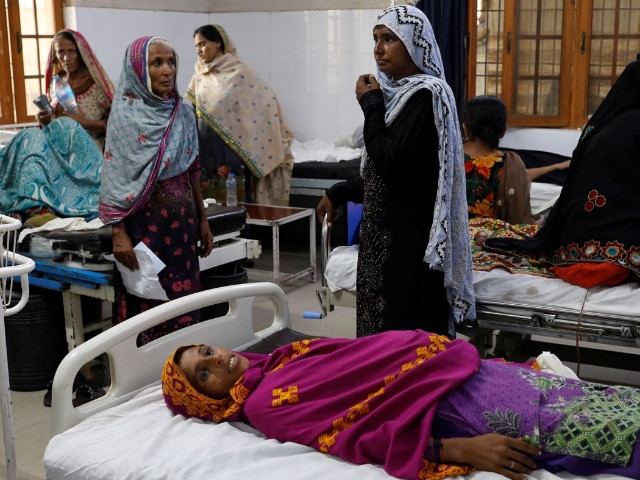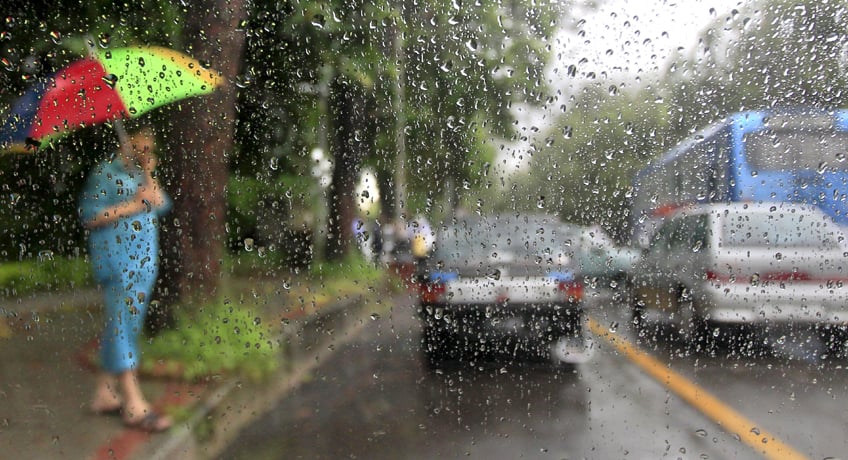
The unrelenting flood has upended life in Sindh, particularly in its rural areas, where it ravaged infrastructure, swamped farmlands, and devoured entire villages, leaving millions of people shelter-less, hungry, and sick.
While some villagers are reluctant to leave their marooned houses, a large number of them have been shifted to shelter camps, where conditions are far from ideal. Expecting mothers are particularly at risk at these camps - an issue highlighted by the international media.
"There are 5,636 pregnant women at these camps. Of them, 439 are nearing delivery," Sindh Health Minister Dr Azra Pechuho disclosed at a provincial cabinet meeting on Sunday. Chief Minister Murad Ali Shah presided over the meeting which was attended by his cabinet members, some of whom joined in through a video link.
Dr Pechuho said that over 600,000 displaced people are living in the shelter camps, where 136,331 of them have been treated by her department for various ailments. Of all the patients, 28 per cent suffered from gastroenteritis, 27 per cent from skin diseases, seven per cent from dengue and malaria and 38 per cent had other medical problems.
After Dr Pechuho’s briefing, the chief minister directed the Health Department to register all pregnant women at the camps and assign doctors to visit them regularly. "These women and children must be given supplements," he added.
Wheat support price
While realising the extensive damage to crops by the floods, the provincial cabinet decided to increase support price to Rs4,000 per kg in order to encourage stricken growers to cultivate more wheat. "The situation is worse as we have lost almost all kharif crop; therefore, we must act to avoid a famine-like situation in the province," Shah said.
"Now, we have to think about our growers who have to reclaim their lands from the flood water, prepare them for sowing and use costly inputs to grow crops; therefore, the benefit of a better price must be passed on to the local grower," he added.
CM Advisor on Agriculture Manzoor Wassan said that since the farmlands are submerged, growers will need a lot of efforts to dewater and prepare them for the next crop. "If wheat is not grown to a certain proportion, the province may face a famine-like situation," he said and suggested offering a good price to growers as an incentive.
The meeting decided that the Sindh Food Department would start releasing its wheat stocks from October 1, 2022, while the issue of price would be suggested by a subcommittee comprising Manzoor Wassan, Minister Food Mukesh Chawla, Minister U&B Ismail Rahu, Special Assistants Qasim Naveed and Haris Gazdar and Chief Secretary Sohail Rajput. The cabinet directed the subcommittee to file its recommendations within a week.
Calamity hit areas
The provincial cabinet, on the recommendations of the Relief Department, accorded an ipso facto approval of 24 districts as calamity-hit areas, including two UCs of Malir district of Karachi. The government has already notified 22 districts as calamity-hit on August 21, and Tharparkar on August 29.
The meeting also discussed the mechanism of distribution of ration bags and directed officials to provide mosquito nets to the flood victims to control malaria cases at the relief camps.
Earlier, PDMA officials, while briefing the meeting, said that as of September 10, as many as 183,424 tents have been distributed and another 9,945 are in the pipeline. The district administrations have been provided with 145,090 tarpaulins and another 60,000 are expected to be received within the next few days.
The meeting was informed that 1,385,105 mosquito nets have been distributed and another 174,600 are in the pipeline. The district administrations have been given 301,060 ration bags, while 21,640 are in the pipeline.
River position
The Provincial Irrigation Department told the meeting that Kotri is still in high flood with 620,095 cusecs upstream and 593,597 downstream while Guddu and Sukkur are in normal position.
Regarding the current situation of Manchhar, the officials informed the meeting that the lake was at 122.80 RL on Sept 11 and the chief minister said that it was 122.50 on September 10. It means the water level is still increasing despite discharging its water into the River Indus.
Irrigation Secretary Sohail Qureshi told the chief minister that 97,017 cusecs of Manchhar lake water is discharging into the river and hopefully its water level will come down within the next 48 hours.
























COMMENTS
Comments are moderated and generally will be posted if they are on-topic and not abusive.
For more information, please see our Comments FAQ